 The Burmese python is well-known to be an invasive species in the Florida Everglades; however, there seems to be another major invasive reptile in the wetland: The Nile crocodile. Yes, the Everglades are full of crocodiles, but they’re native to America. These Nile crocodiles come from Africa. But, how did these crocs make their way across the Atlantic Ocean? And, how they end up swimming around the Everglades? That is the big question.
The Burmese python is well-known to be an invasive species in the Florida Everglades; however, there seems to be another major invasive reptile in the wetland: The Nile crocodile. Yes, the Everglades are full of crocodiles, but they’re native to America. These Nile crocodiles come from Africa. But, how did these crocs make their way across the Atlantic Ocean? And, how they end up swimming around the Everglades? That is the big question.
A University of Florida herpetologist said he isn’t sure how they got into the wild over here, because they certainly didn’t swim from Africa. Nile crocs have been captured in the Everglades in 2009, 2011, and 2014. After reports from locals about strange looking alligators, this scientist and his colleagues captured and tested the crocs. After some DNA testing was done, it was determined these crocodiles are Nile crocodiles, and the three were probably related to each other. However, they were not matched to any of the Nile crocs in any of Florida’s licensed Florida attractions, including Disney’s Animal Kingdom.
What does this mean? Well, these crocs could have been brought over to the area illegally by an unlicensed reptile collector. The crocs could have escaped or have been let go. The crocs found were believed to have escaped from Predator World, and that no one released them but they escaped, according to officials at the Florida Wildlife Conservation Commission.
The male Nile croc can grow to be more than 16 feet long and weigh more than 1,600 pounds. They have a bronze/brown/yellow coloring. They are much larger and more aggressive than the American crocodile or American alligator. If this crocodile begins to grow in numbers in the Everglades, it will do harm to the area’s ecosystem. The Everglades is a perfect place for this croc to survive in. Since one of the three captured was captured before and escaped, this proved these crocs can live and survive in Florida for many years and they can grow and populate quickly. Cross-breeding between the American crocodile and the Nile crocodile could create larger crocs in the area, which could endanger the smaller breads of crocodiles and the purity of the American breed.
As of right now, Florida Wildlife Conservation Commission officials aren’t worried, and believe they have captured all the Nile crocodiles in the area, since there have been no other confirmed sightings and no unaccounted for captive animals. These officials conduct regular routine inspections and surveys to look out for exotic and invasive species. The agency also doesn’t believe these crocs mated with any native crocs in their time in the wild, because of dissimilar habitat and behavior.
Explore the Everglades
Despite being home to crocodiles, especially one’s native to the area, the Everglades is a safe place for humans to explore (with caution and regulations in place, of course). A great way to explore the crocodile’s habitat is with an airboat tour. Contact Captain Mitch’s Airboat Tours here or call 800-368-0065 to book a tour today.
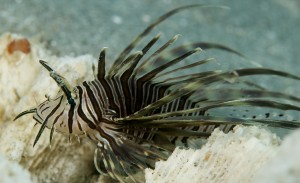 Ever heard of the lionfish? It’s actually quite a pretty fish with its pectoral fins, brownish stripes; however, it’s not so good for the Everglades. It’s considered an invasive species. Invasive species, non-native species to an area, happen to have the ability to live and thrive in habitats that are not their true home or region. Lionfish haven’t been a huge problem yet in the Everglades, but their numbers are increasing each year. In 2014, 13 lionfish were removed from Everglades National Park.
Ever heard of the lionfish? It’s actually quite a pretty fish with its pectoral fins, brownish stripes; however, it’s not so good for the Everglades. It’s considered an invasive species. Invasive species, non-native species to an area, happen to have the ability to live and thrive in habitats that are not their true home or region. Lionfish haven’t been a huge problem yet in the Everglades, but their numbers are increasing each year. In 2014, 13 lionfish were removed from Everglades National Park.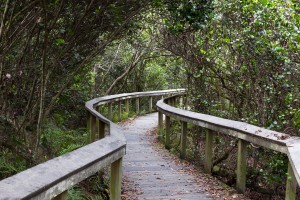 The Everglades is a beautifully mysterious place to visit. So, why not experience it up-close-and-personal? The Everglades National Park allows visitors to explore their surroundings with several hiking and bike trails winding throughout the wetlands.
The Everglades is a beautifully mysterious place to visit. So, why not experience it up-close-and-personal? The Everglades National Park allows visitors to explore their surroundings with several hiking and bike trails winding throughout the wetlands.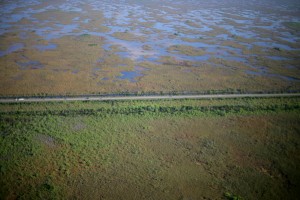 This past Earth Day, the Everglades received great news – a new bridge will be built to restore the flow of water flowing into Everglades National Park.
This past Earth Day, the Everglades received great news – a new bridge will be built to restore the flow of water flowing into Everglades National Park. The beauty, vastness, and mystical nature of the Everglades is something that should be experienced by everyone in real life. Beautiful flowers. Mangrove forests. Endangered creatures. Even if you’re lucky enough to visit this special place, you can’t take it home with you. However, thanks to talented directors, people can bring the Everglades into their home. Several documentaries have been made throughout the years about the Everglades to shed light on environmental issues, showcase the beauty and importance of the area, and profile plant life, wildlife, and marine life within. No matter where someone lives, he or she can have an up-close-and-personal look into he Everglades from the comfort of his or her own living room.
The beauty, vastness, and mystical nature of the Everglades is something that should be experienced by everyone in real life. Beautiful flowers. Mangrove forests. Endangered creatures. Even if you’re lucky enough to visit this special place, you can’t take it home with you. However, thanks to talented directors, people can bring the Everglades into their home. Several documentaries have been made throughout the years about the Everglades to shed light on environmental issues, showcase the beauty and importance of the area, and profile plant life, wildlife, and marine life within. No matter where someone lives, he or she can have an up-close-and-personal look into he Everglades from the comfort of his or her own living room.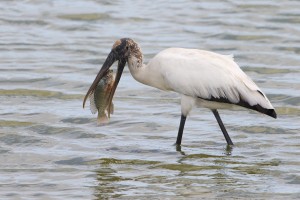 The Everglades needs water to survive; it’s a water-based ecosystem made up of sawgrass marshes, waterways, prairies, forested uplands, and ponds, including Paurotis Pond. One reason the area needs water so badly is because it’s home to an abundance of plants, animals, and marine life. Not only does water give the plants and animals sustenance, it gives them a home.
The Everglades needs water to survive; it’s a water-based ecosystem made up of sawgrass marshes, waterways, prairies, forested uplands, and ponds, including Paurotis Pond. One reason the area needs water so badly is because it’s home to an abundance of plants, animals, and marine life. Not only does water give the plants and animals sustenance, it gives them a home.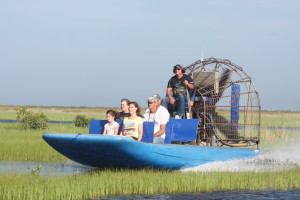 Airboats are an iconic sight to see in the Everglades. The thought of going on airboat tour adventure can be exciting. It’s fun to think about the seemingly endless acres of swampland the boat will travel through and all the plant life and wildlife that could be spotted during a trip. This is your chance to be in the water with some ‘gators! However, the thought of going on an airboat tour can also be nerve raking, because accidents can happen.
Airboats are an iconic sight to see in the Everglades. The thought of going on airboat tour adventure can be exciting. It’s fun to think about the seemingly endless acres of swampland the boat will travel through and all the plant life and wildlife that could be spotted during a trip. This is your chance to be in the water with some ‘gators! However, the thought of going on an airboat tour can also be nerve raking, because accidents can happen.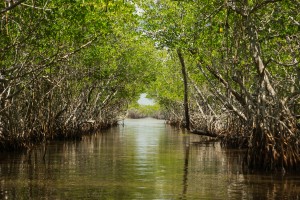 Have you ever seen a mangrove forest? They’re enchanting. Branches and roots all intertwined, lining waterways – they look like something out of a fantasy. Across the entire state of Florida, there are 469,000 acres of mangrove forests.
Have you ever seen a mangrove forest? They’re enchanting. Branches and roots all intertwined, lining waterways – they look like something out of a fantasy. Across the entire state of Florida, there are 469,000 acres of mangrove forests.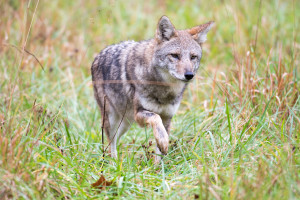 Contrary to popular belief, coyotes are not limited to southwestern states. In fact, coyotes exist throughout the majority of Florida, and the Everglades is no exception. Coyotes are considered a noninvasive species since they found their way to Florida without any human intervention. And the population of coyotes in Florida has steadily increased over the past 15 years. Everglades coyotes are primarily found in marshy habitats otherwise known as marl prairies. These wild dogs share terrain with all sorts of animals from marsh rabbits to armadillos.
Contrary to popular belief, coyotes are not limited to southwestern states. In fact, coyotes exist throughout the majority of Florida, and the Everglades is no exception. Coyotes are considered a noninvasive species since they found their way to Florida without any human intervention. And the population of coyotes in Florida has steadily increased over the past 15 years. Everglades coyotes are primarily found in marshy habitats otherwise known as marl prairies. These wild dogs share terrain with all sorts of animals from marsh rabbits to armadillos. You’ve probably heard about most Everglades predators: large alligators, monstrous pythons, elusive black panthers, and the list goes on. But do you know about the smelliest, most reclusive predator of them all? It’s called the Everglades skunk ape, rightfully named for its supposed rotten eggs stench. It walks on two legs, its whole body immersed in dark brown fur, and it stands at a baffling seven feet tall. Of course, all of this information relies on hearsay, but some Florida folks swear they’ve seen the tall, foul-smelling swamp monster.
You’ve probably heard about most Everglades predators: large alligators, monstrous pythons, elusive black panthers, and the list goes on. But do you know about the smelliest, most reclusive predator of them all? It’s called the Everglades skunk ape, rightfully named for its supposed rotten eggs stench. It walks on two legs, its whole body immersed in dark brown fur, and it stands at a baffling seven feet tall. Of course, all of this information relies on hearsay, but some Florida folks swear they’ve seen the tall, foul-smelling swamp monster.





